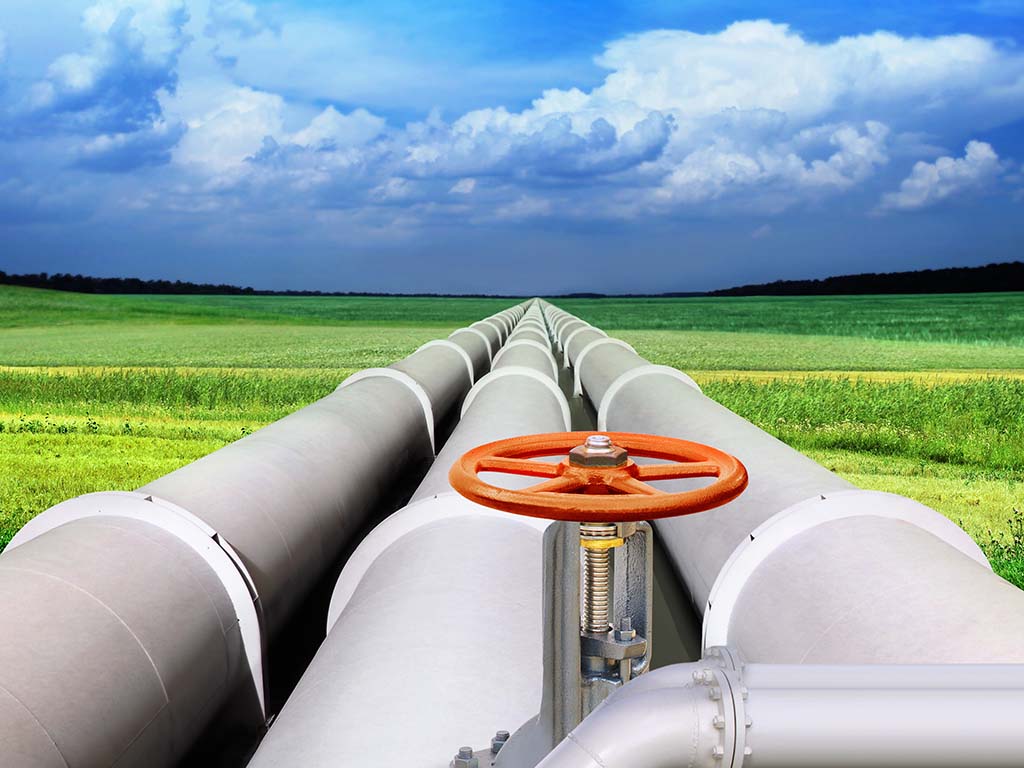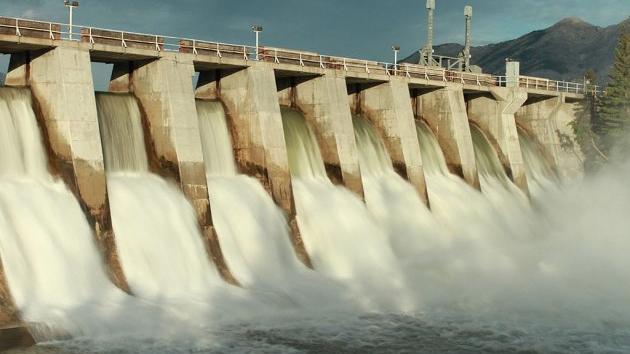Spatial plan for project to free Serbia from dependence on Janaf completed – This is detailed route of oil pipeline from Hungarian border to Novi Sad
Source: eKapija
 Tuesday, 24.09.2024.
Tuesday, 24.09.2024.
 11:47
11:47
 Tuesday, 24.09.2024.
Tuesday, 24.09.2024.
 11:47
11:47
Illustration (Photo: ssuaphotos/shutterstock.com)

The document which was prepared by the Urban Planning Institute of Vojvodina, and whose investor is Transnafta AD Pancevo, shows a detailed route of the future oil corridor, who aim is to secure diversification for Serbia when it comes to crude oil supply and reduce transportation costs.
At the moment, the only route of supplying Serbia with crude oil is through the Janaf oil pipeline.
With the new oil pipeline, the oil would reach our country through the Hungarian territory from the Russian oil pipeline Druzhba, by which a major part of Europe is supplied.
– With the planned Hungarian border-Novi Sad oil pipeline bypasses transport by tankers from Novorossiysk, through the Black Sea, the Bosphorus Strait, through the Mediterranean, to the Adriatic Sea and the Port of Omisalj – the Plan says.
The Plan also says that the preparation of the technical documentation (The Feasibility Study with the Preliminary Project and The Environmental Protection Study) is in progress, parallel with the preparation of the Spatial Plan.
The connecting of the Hungary-Serbia main oil pipeline with the Transnafta transport system (that is, the national network) will be secured with the construction of a reception-dispatch cleaning station and a measuring station in close proximity to the border with Hungary.
Within the Transnafta terminal, a reception-dispatch cleaning station will be set up to clean the entire route of the pipeline on the part of the route going through Serbia.
The transport of crude oil in the capacity of 5.5 million tons of oil a year will be done via an underground steel pipeline of 120 kilometers, in a closed and controlled system. The preliminary planned diameter of the oil pipeline is DN450.
The total area covered by the Spatial Plan is 4,535.43 ha and it encompasses parts of the territories of the municipalities of Kanjiza, Senta, Ada, Becej, Zabalj and the city of Novi Sad.
(Photo: PPPPN naftovoda granica Mađarske-Novi Sad)

The pipeline begins at the border with Hungary in close proximity to the border crossing Horgos 2. At 300 meters from the border, the reception-dispatch cleaning station an at atmospheric tank of 10 m3 are to be set up.
The main direction of the route is from north to south, and the point of connection at the Serbian-Hungarian border (km 0+000, T0) is taken to be the beginning of the route, from which it goes to the reception-dispatch cleaning station Horgos, where the reception cleaning station, the dispatch cleaning station and the block station are all located, all fenced off together, following which the route continues southward.
In the proximity of the Horgos settlement, the oil pipeline route passes it on the southeast side at a distance of around 2 km and it also passes the Martonos settlement on the northwest side at a distance of around 400 m, where it crosses the IB-grade state road no. 13 and the local Horgos-Kanjiza railroad.
In the territory of the municipality of Kanjiza, the corridor of the oil pipeline continues in the southwest direction, passes by the city of Kanjiza on the west side at a distance of around 2.8 km, west on the Zimovic settlement at a distance of around 800 m and west of the Tresnjevac settlement at a distance of around 1 km.
In the territory of the municipality of Senta, the oil pipeline corridor stretches in the southeast direction, passes by the Gornji Breg settlement on the west side at a distance of around 2 km, from where it continues in the same direction toward the municipality of Ada.
In the territory of the municipality of Ada, the corridor of the oil pipeline stretches southward, touching, on the west side, the Sterijino settlement at a distance of around 600 m, then takes a slight turn in the southwest direction and goes into the municipality of Becej, crossing the IIA-grade state road no. 105 Tornjos-Gornji Breg.
In the territory of the municipality of Becej, the route of the oil pipeline goes southward and, in this cadaster municipality, crosses the river Cik.
The route of the oil pipeline then continues on, touching, on the west side, the Backo Petrovo Selo settlement at a distance of around 3 km and the Becej settlement at a distance of around 2 km. In the territory of the municipality of Becej, the route crosses the DTD canal and touches the Backo Gradiste settlement on its west side at a distance of around 2.1 km.
In the territory of the municipality of Zabalj, the route of the oil pipeline goes southward and touches the Curug settlement on its west side at a distance of around 2.5 km.
On the border of the cadaster municipality of Curug and the cadaster municipality of Gospodjinci, the route crosses the river Jegricka and then its tributary, the Mala Bara.
Near the Gospodjinci settlement, the route of the oil pipeline passes by on its east side at a distance of around 1.6 km from the outskirts of the settlement, crosses the IIA-grade state road no. 112 and the Gospodjince-Zabalj railroad. Near the Main Junction Point (MJP) Gospodjinci, the route of the oil pipeline leaves the corridor of the existing gas pipeline Interconnector Bulgarian border-Hungarian border.
On the border of the cadaster municipality of Djurdjevo and the cadaster municipality of Gospodjinci, the route of the oil pipeline enters the corridor of the pipeline:
– the junction gas pipeline RG-04-11/III MJP Gospodjinci – Futog DN400
– the junction gas pipeline RG-04-04 MJP Gospodjinci – Novi Sad DN300
– the oil pipeline US Tisa - Novi Sad Refinery, diameter 10",
– the main gas pipeline MG-02 MJP Gospodjinci – Beocin DN300
The route then goes in the east-west direction and, after 10,500 m, turns in the southwest direction and, after the crossing with rail tracks in three places and the IB-12 state road, near the MJP Nemanovci, enters the infrastructure corridor of the E-75 highway (“Energy Corridor”), in the administrative area of the city of Novi Sad.
The “Energy Corridor” consists of the built routes:
– the oil pipeline Nadrljan-Novi Sad, diameter 8" (NNS)
– the oil pipeline Elemir-Novi Sad, diameter 10" (ENS)
– the oil pipeline Danube-Novi Sad, diameter Ø26" (DN1), followed by a telemetric (optical) cable,
– the oil pipeline Novi Sad-Pancevo, diameter Ø18" (DN2), followed by a telemetric (optical) cable and the planned route for:
– the oil pipeline Collection-Dispatch Station Turija Sever-NS Refinery (according to the Spatial Plan of the Special-Purpose Area of the Infrastructure Corridor of the Oil Pipeline from the Collection-Dispatch Station Turija Sever to the Novi Sad Oil Refinery, with Elements of Detailed Regulation,
– oil products pipeline P1
– oil products pipeline P2
The oil pipeline then crosses the infrastructure corridor of the E-75 highway before the Novi Sad toll station, crosses the industrial zone North IV in the south direction for a length of around 2.1 km and ents at the Reception Cleaning Station Novi Sad within the Transnafta Terminal (km 113+230, T153).
As noted, the corridor of the oil pipeline mostly goes outside populated zone and other building areas, on primarily agricultural land. In other words, it mostly goes through agricultural, water and forest land, and to a lesser extent, beneath public areas in the spots where it crosses waterways, state and local roads and railroads.
Let us remind that the story of connecting Serbia to the Russian oil pipeline began two years ago, after the announcement of the stopping of the deliveries of Russian oil via Janaf upon the adoption of the eighth package of EU sanctions, according to which the countries of the western Balkans are not exempt from the ban on the import of crude oil from Russia via the sea.
The Ministry of Mining and Energy announced at the time that it was looking into all the possibilities of securing diversification in the field of crude oil supply.
In the spring of 2023, at the 13th session of the Joint Commission for Economic Cooperation of Serbia and Hungary, the decision on the construction of an oil pipeline from Algyo in Hungary to Novi Sad, to be built by the Hungarian MOL and the Serbian Transnafta, was adopted, after which the state Memorandum of Understanding on the construction of the oil pipeline was signed as well.
The agreement on the preparation of the planning and project documentation of this project was awarded at the tender to the group of bidders consisting of Delta Inzenjering, GeoGIS and Delta Preving from Belgrade, and the feasibility study for the construction of the oil pipeline is expected to be completed by the end of the year.
According to earlier announcements, the Serbia-Hungary oil pipeline should be built by 2028, and the estimated value of the project is EUR 157 million for the Serbian section of the oil pipeline.
The spatial plan is available for public inspection until October 7.
B. P.
Companies:
 Ministarstvo građevinarstva, saobraćaja i infrastrukture Republike Srbije
Ministarstvo građevinarstva, saobraćaja i infrastrukture Republike Srbije
 Transnafta ad Pančevo
Transnafta ad Pančevo
 JP Zavod za urbanizam Vojvodine Novi Sad
JP Zavod za urbanizam Vojvodine Novi Sad
Comments
Your comment
Naš izbor
Most Important News
Full information is available only to commercial users-subscribers and it is necessary to log in.
Follow the news, tenders, grants, legal regulations and reports on our portal.
Registracija na eKapiji vam omogućava pristup potpunim informacijama i dnevnom biltenu
Naš dnevni ekonomski bilten će stizati na vašu mejl adresu krajem svakog radnog dana. Bilteni su personalizovani prema interesovanjima svakog korisnika zasebno,
uz konsultacije sa našim ekspertima.


 Izdanje Srbija
Izdanje Srbija Serbische Ausgabe
Serbische Ausgabe Izdanje BiH
Izdanje BiH Izdanje Crna Gora
Izdanje Crna Gora


 News
News








